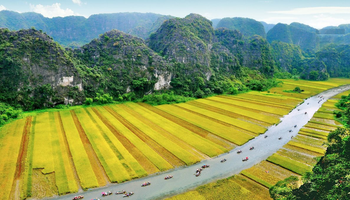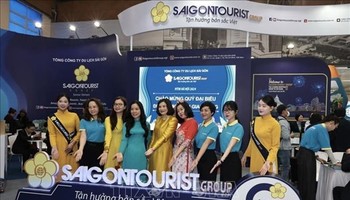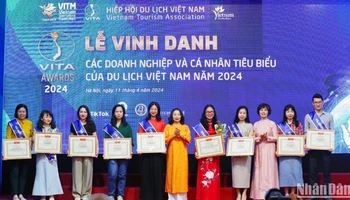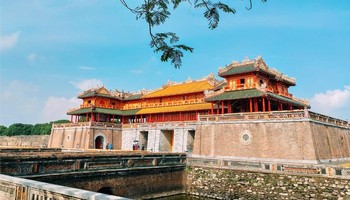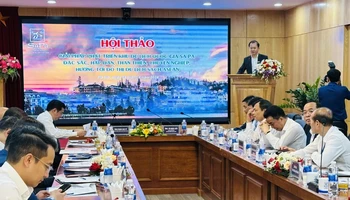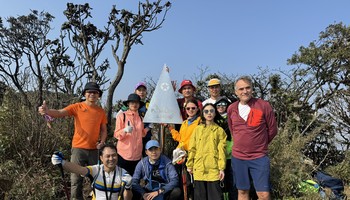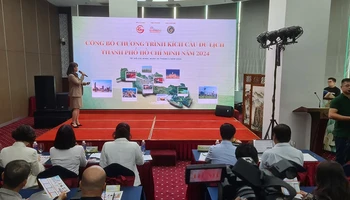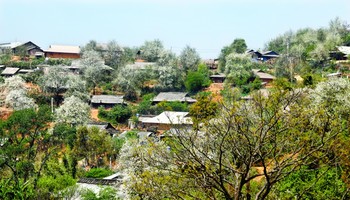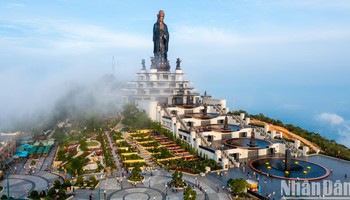At the end of December 2018, the northern province of Quang Ninh welcomed the 15 millionth foreign visitor to Vietnam. The tourist, James Kopenec, from Arizona, the US, said that Vietnam was far beyond his imagination. Other foreign vacationers, who were also on board a cruise trip with James Kopenec, expressed their surprise at the beauty and dynamism of Vietnam after arriving at the Ha Long international cruise port, the first of its kind to be built by a private company.
Quang Ninh province has made a make-over in its transport system, infrastructure, and diversity tourist products in order to attract more visitors. The locality has developed two major signature tourist products, including Ha Long – Quang Ninh tourism festival, and Ha Long carnival.
The first one, the Ha Long – Quang Ninh Tourism Festival, was launched in 1996. After several editions, the event has been elevated into the Culture, Sports and Tourism Week with a larger scale and series of activities, inviting tourists to stay longer while visiting Quang Ninh.
Since it was first observed in 2007, the Ha Long Carnival has attracted thousands of holiday-makers every year, establishing itself as an iconic tourist product of Quang Ninh.
The participation of investors has contributed to meeting the demand of visitors to Quang Ninh province with many projects. One of the highlight projects is Van Don Heritage Road, which covers more than 3,300 hectares with a complex of entertainment and leisure facilities, a performance centre, a convention centre, restaurants, spas, a golf course, a water park, a wharf, and a helipad.
According to representatives of Crystal Bay Group, the project’s investor, tourists will arrive in Van Don through the group’s private charter flights. In 2018, the group operated around 1,500 charter flights to bring international guests to Vietnam.
Meanwhile in the central region, on an evening at the end of March 2008, Han river in Da Nang city sparkled with a stunning firework display entitled ‘A Fairy Dance’ on the opening night of the first Da Nang International Fireworks Competition. Since then, the competition has been eyed as a signature tourist product of Da Nang in its effort to establish itself in the travel map as a destination of international events and festivals.
The event has now attracted the participation of businesses and has been made into a nearly two-month festival. Starting from only two night shows which lured around 25,000 visitors in the 2008 event, the figure has risen to more than 1.58 million a decade later.
Nguyen Duc Chi, Chairman of Crystal Bay Group’s Board of Directors, said that each destination needs an “ecosystem” to make it more welcoming for visitors, including support facilities, services, entertainment and leisure activities, as well as shopping centres. It is also necessary to develop infrastructure such as airports, wharfs, medical and maritime tourist services.
In its recent efforts to connect Vietnam’s tourist attractions, the group is working on a strategic project entitled ‘One holiday with many destinations’, which links the iconic Ha Long Bay in Vietnam’s northern province of Quang Ninh with the indigenous culture of Cham people in the south central coastal province of Ninh Thuan. The project is expected to allow vacationers to enjoy to the fullest the diversity and natural beauty of Vietnam.
The success of the tourism sectors of Quang Ninh and Da Nang has opened up lessons learnt in creating strategic tourist products of localities. The success is contributed to by positive collaboration between the local authorities and investors, which has helped to increase the number of tourist arrivals and promote the land on the international travel map.

